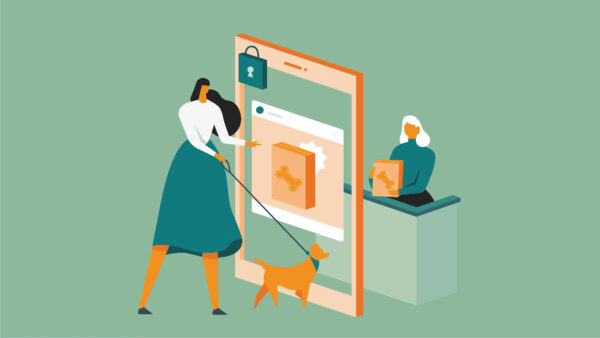Imagine, you’re scrolling through your social media feed, bombarded with ads for products you’ll never use and irrelevant news articles. Suddenly, a personalized video ad pops up, featuring someone just like you enjoying a vacation at your dream destination. You pause, intrigued. This, my friends, is the power of personalized marketing in a world saturated with information overload.
In 2024, personalization isn’t just a trendy buzzword; it’s the very oxygen of successful marketing. Consumers are savvier than ever, expecting brands to understand their unique needs and preferences. According to Epsilon, 80% of consumers are more likely to do business with companies that offer personalized experiences, while McKinsey reports that personalization can increase sales by up to 10%. The numbers speak for themselves—ignoring personalization is no longer an option.
But navigating this dynamic landscape can feel daunting. Fear not, fellow marketers! This comprehensive guide equips you with the knowledge and insights to craft personalized journeys that resonate, engage, and convert. Buckle up, we’re diving deep into the world of personalized marketing in 2024.

WHAT IS PERSONALIZED MARKETING?
Before we delve into the intricacies of crafting personalized journeys, let’s get back to the basics: What exactly is personalized marketing? In essence, it’s the art of tailoring your marketing messages and experiences to the unique needs, preferences, and behaviors of individual customers. It’s about moving away from the “spray and pray” approach of mass marketing and toward a customer-centric strategy that fosters genuine connections and drives meaningful engagement.
Imagine you’re walking into a bustling restaurant. Instead of being greeted with a generic “welcome!” you’re recognized by name, your favorite server remembers your usual order, and the menu suggests dishes you’ve enjoyed in the past. This warm, personalized experience leaves a lasting impression and makes you feel valued as a customer.
Think of personalized marketing as replicating this experience across all your digital touchpoints. Here are some key elements:
- Leveraging data: The foundation of personalization lies in data. It can come from various sources, including past purchases, website interactions, email engagement, social media activities, and customer surveys. By analyzing this data, you gain valuable insights into your audience’s demographics, interests, preferences, and pain points.
- Segmentation: Not all customers are created equal. Dividing your audience into smaller segments based on shared characteristics allows you to create targeted messages and offers that resonate with each group. Imagine sending fitness enthusiasts emails about workout gear instead of casual wear, or targeting professional athletes with offers on high-performance equipment.
- Dynamic content: Take website personalization to the next level with dynamic content that adapts to individual visitors. Show different website banners, product recommendations, and calls to action based on a user’s browsing history or inferred interests. This increases the relevance of your message and improves conversion rates.
- Personalized communication: Ditch the generic emails! Segment your email list and tailor messages to each group’s interests and pain points. Address customers by name, reference their past purchases, and offer personalized recommendations. Remember birthdays and anniversaries with special offers to enhance the personal touch.
- Interactive experiences: Give your audience control over their journey. Utilize quizzes, surveys, and preference centers to collect zero-party data, allowing customers to tell you what they’re interested in and how they want to be contacted. This builds trust and empowers them to shape their experience.
Here are some examples of personalized marketing in action.
- Nike personalizes its website based on users’ browsing history, showcasing relevant shoes and apparel based on their preferred sport and activity level.
- Sephora utilizes a beauty quiz to collect skincare concerns and preferences, then recommends personalized product selections in its online store and physical locations.
- Starbucks sends targeted push notifications to app users, alerting them to nearby store deals and offering customized rewards based on their favorite drinks.
The benefits of personalized marketing are undeniable.
- Increased engagement: When customers feel like you understand them, they’re more likely to interact with your brand.
- Improved conversion rates: Relevant offers and recommendations lead to higher purchase rates and increased ROI.
- Enhanced customer loyalty: Personalized experiences foster trust and build stronger relationships with your audience.
- Stronger brand differentiation: Standing out in a crowded marketplace requires personalized connections that resonate with your audience.
Remember, personalization is not a one-time effort; it’s a continuous journey. By continuously collecting data, refining your segmentation, and optimizing your approach, you can unlock the full potential of personalized marketing and create journeys that captivate your audience, drive conversions, and leave a lasting impression.

GET STARTED WITH PERSONALIZED MARKETING
Define your strategy: To kick-start your personalized marketing endeavors, delineate a clear strategy aligned with your objectives and audience segments. Whether it’s acquisition, conversion, growth, or retention, tailor your approach to cater to each stage of the customer journey. Consider employing landing-page personalization for acquisition, retargeting campaigns for conversion, product recommendations for growth, and special offers for retention.
Choose the right channels: Navigating through the myriad of marketing channels can be daunting. However, focusing on website personalization and email marketing can yield significant results. These channels provide ample opportunities to deliver customized experiences and drive conversions effectively.
Strategize data capture: Effective personalization hinges on robust data-collection mechanisms. Implement strategies to capture relevant data promptly and make it accessible to your marketing arsenal. From cookie-based tracking to email preference centers, leverage various methods to glean insights into user behavior and preferences.
Provide transparency and trust: Transparency is paramount in today’s data-driven landscape. Be forthcoming about your data collection practices and offer users control over their information. Incorporating opt-out mechanisms and encouraging users to create profiles fosters trust and cultivates a positive brand-consumer relationship.
Embrace CRM solutions: Invest in a robust customer relationship management (CRM) system to streamline data management and enhance operational efficiency. CRMs serve as centralized hubs for storing and analyzing customer data, enabling real-time access to valuable insights.
Leverage specialized tools: Explore specialized tools tailored to your personalized marketing needs. From basket-abandonment solutions to email personalization platforms, leverage these tools to deliver targeted content across various touchpoints effectively.
Tailor your campaigns: With your strategy and technology stack in place, focus on crafting personalized campaigns tailored to your audience’s preferences. Collaborate with experienced marketers to refine visuals, messaging, and campaign timing for optimal results.
Activate your initiatives: Once your campaigns are meticulously crafted, it’s time to set them in motion. Activate your personalized initiatives across chosen channels and monitor their performance closely.
Continuous improvement: The journey toward personalized-marketing excellence is an iterative process. Continuously monitor campaign performance and leverage A/B testing to refine your strategies. Gather insights, learn from user interactions, and adapt your approach accordingly.
Embrace agility: In today’s dynamic landscape, agility is key to staying ahead of the curve. Remain flexible and open to experimentation, embracing change as an opportunity for growth and innovation.
Joshua Maddux is Founder of 95Visual. He has an in-depth background in business planning, strategy, development, and architecture.














































